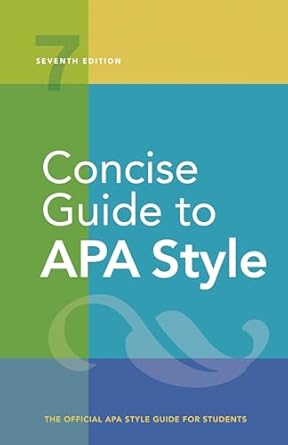[toc]
mastering source elements a referencing guide
Concise Guide to APA Style: 7th Edition (OFFICIAL)
Page 250 Review
Navigating the Source Element in Academic References
The provided excerpt delves into the crucial “source element” within academic references, offering a detailed guide on its composition and formatting.
This element, fundamental to proper citation, ensures readers can locate the original material.
Understanding its nuances is essential for maintaining academic integrity.
The Composition of the Source Element
According to the text, the source element can be either singular or dual in nature, dependent on the reference category. “The source element of a reference has one or two parts, depending on the reference category.
For example, the source for a print book without a DOI has one part: the book publisher.
However, the source for a journal article with a DOI has two parts: the periodical information (the journal title, volume number, issue number, and page range or article number) and the DOI.” This distinction highlights the importance of identifying the appropriate components based on the type of work being cited.
Omitting Redundant Information
A key principle outlined is avoiding repetition within the reference. “Information in the source may be omitted from the reference to avoid repetition.
Namely, when the author and publisher or site name of a book, report, webpage, or website are the same, the publisher or site name is omitted from the source element.” This streamlining approach contributes to a cleaner and more concise reference list.
Specifics for Periodical Sources
The excerpt provides specific guidance for periodical sources, which include journals, magazines, newspapers, newsletters, and blogs. “When a periodical (i.e., journal, magazine, newspaper, newsletter, or blog) is the source, provide the periodical title, volume number, issue number, and page range or article number (see Chapter 10, Examples 1-6, 9-12, 15, and 16).” The format demands a precise ordering of elements, as well as adherence to capitalization and italicization rules.
For instance, the provided example demonstrates the correct formatting: “Psychology of Popular Media Culture, 5(2), 101-118.” The text further elaborates on capitalizing the periodical title using title case, italicizing it, and placing a comma after it.
Handling Periodical Titles
The text emphasizes fidelity in reproducing periodical titles. “Reproduce periodical titles as shown on the work.
If the official title includes an abbreviation, reproduce that abbreviated title in the reference (e.g., PLOS ONE, JAMA Pediatrics).
However, do not abbreviate periodical titles yourself (e.g., do not abbreviate The New England Journal of Medicine to N Engl J Med).” This rule underscores the importance of accuracy and consistency in citation.
General Guidelines and Further Resources
The excerpt references Section 9.29 (Reference List), Section 9.30 (Database or Archive), Section 9.32 (Social Media Site), and Section 9.33 (Website).
This suggests that the document offers comprehensive guidelines for citing various types of sources, including online materials and archived data.
These sections likely delve into the specific requirements for including DOIs (Digital Object Identifiers) or URLs, which are crucial for accessing online sources.
The guidance offered here is essential for accurately and comprehensively citing sources across many media types.
Additionally, sources associated with specific locations, such as artwork in a museum, should include location information, as detailed in Section 9.31.
Conclusion
In summary, this section of the text provides a meticulous guide to constructing the source element in academic references.
By understanding its components, adherence to formatting rules, and careful consideration of specific source types, researchers can ensure the accuracy and completeness of their citations, which is vital for maintaining academic integrity.
The emphasis on omitting redundant information and faithfully reproducing periodical titles further refines the referencing process, leading to clearer and more reliable scholarly communication.
Buy full ebook for only $18: https://www.lulu.com/shop/american-psychological-association/concise-guide-to-apa-style-7th-edition-official/ebook/product-rmzpq54.html?page=1&pageSize=4
Mastering Source Elements A Referencing Guide
Read more: Citing Webinars, YouTube & Music: A Guide


Leave a Reply